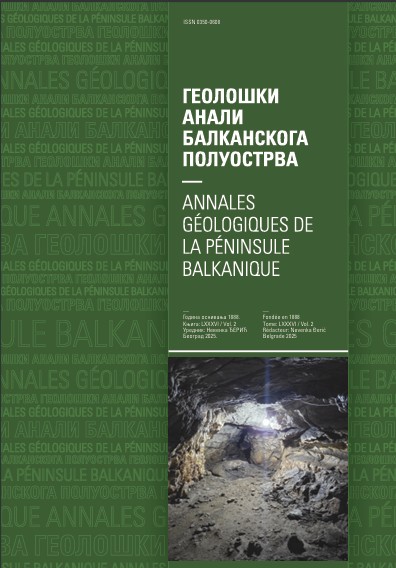The Upper Miocene Lake Pannon marl from the Filijala Open Pit (Beočin, northern Serbia): New geological and paleomagnetic data
Abstract
This work presents major lithological, structural, paleontological and paleomagnetic characteristics of the Upper Miocene Pannonian marl in the Filijala Open Pit of the La Farge Cement Plant near Beočin, northern Serbia. Pannonian marl lies between the underlying heterogeneous Sarmatian deposits and the overlying set of Pontian sand beds and Quaternary sediments. The open pit is located on the NE range of Fruška Gora, a horst structure with a core of Paleozoic, Mesozoic and Paleogene rocks in a complex structural pattern. Pannonian sediments, which are part of a younger structural stage, deposited on the horst limbs. The Pannonian marl strata dip at angles from 12° to 26° (to the NNW), forming a monocline. The strata deformations are a consequence of radial tectonics and are a potential source of landslides. The many mollusks (7 gastropod and 9 bivalve species) and ostracodes (27 species) and their biostratigraphical position indicate marl deposition throughout the Pannonian age. A paleomagnetic investigation established that the marl has inconsistent remanent magnetization (with bad statistical parameters), which originates from neoformed magnetite.
Copyright (c) 2010 Geološki anali Balkanskoga poluostrva

This work is licensed under a Creative Commons Attribution 4.0 International License.










